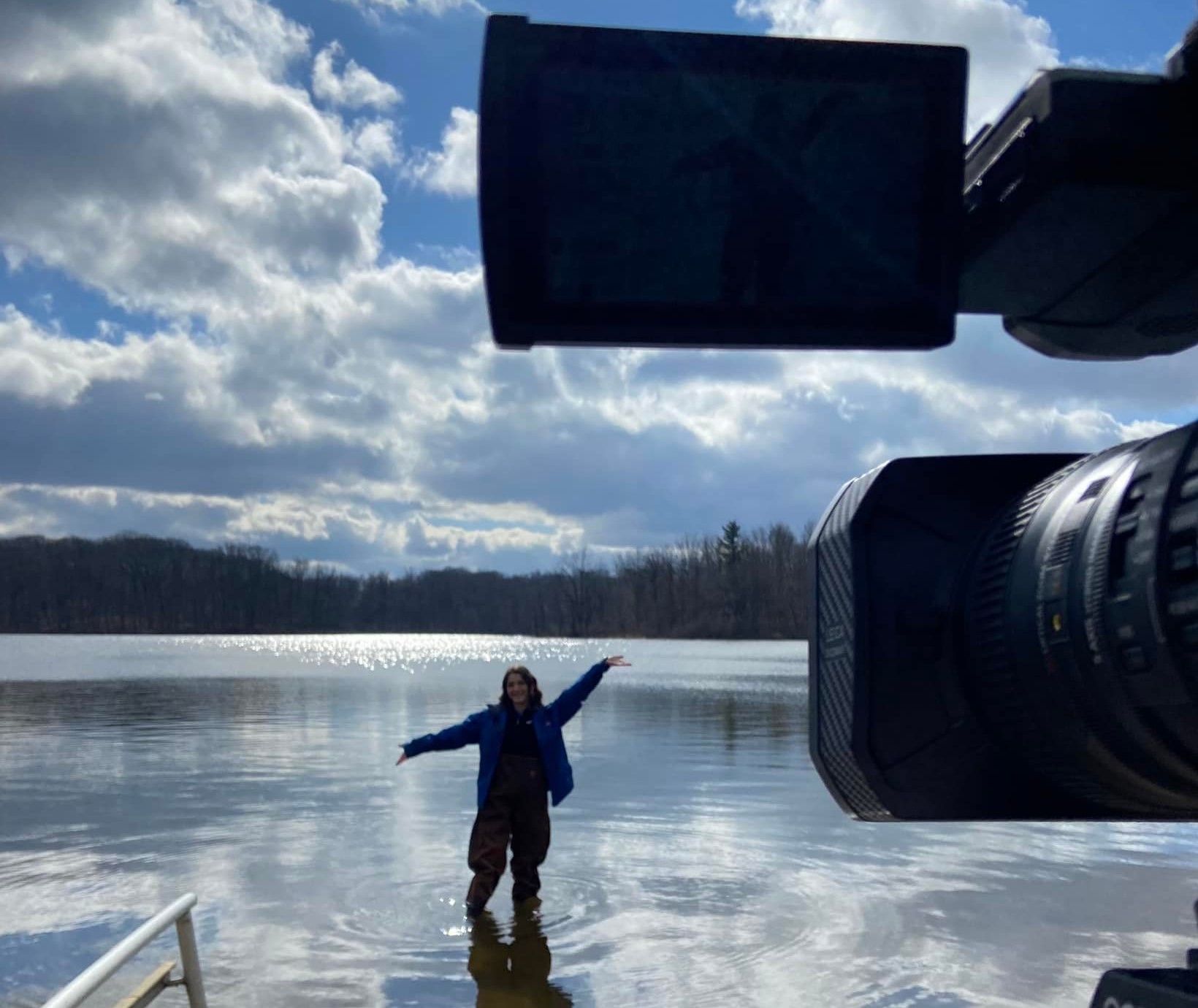Sudden Shift: Summer Water Woes
Many people enjoy our local lakes during the summertime for boating, swimming, and other recreational activities, but now there’s more we’ll need to think about before getting in the water. The quality of the water may not have been something many have considered in the past, but we’ll need to think more about it in the future.
Cyanobacteria, more commonly known as blue-green algae, have made headlines over the years as concern over this harmful organism grows – but what are they?
Blue-green algae is a type of bacteria that grows in waterways naturally, but can become a problem when they produce toxins, especially when they grow too quickly, forming algae blooms. Cyanobacteria blooms can produce cyanotoxins, posing a health risk to people, animals, and plants.
These harmful blooms have been something we’ve had to deal with right here in Michiana. Cyanotoxins have been previously detected in Worster Lake at Potato Creek State Park. Although the lake typically sits at an “advisory” level, there have been times in the past when the level of toxins was high enough to warrant the beach being closed.
During times when toxin blooms are present, these warnings should be taken seriously with the risk to our health being elevated. “It does make you really itchy, it makes your stomach hurt, it can cause diarrhea if you consume it,” says Jessica Filer, the Interpretive Naturalist for the State Park. “Even worse, if it progresses, you could have breathing difficulties.”
Pets and wild animals are even more at risk when it comes to blue-green algae, with seizures and even death being a possibility after consumption.
Symptoms like these have been seen in Michiana before, and they are likely to get worse as our warming climate contributes to more favorable conditions for harmful algae growth.
Warm, nutrient rich water allows blue-green algae to thrive. As our air temperatures rise, our water temperatures rise as well – but you need more than just warm water. Nutrients like phosphorus and nitrogen are also needed for cyanobacteria to blossom, and high levels of these nutrients make the formation of a harmful algae bloom more likely.
Another consequence of a warmer climate is intense rainfall extremes. Warmer air can hold more moisture for longer, resulting in periods of drought followed by heavy downpours when that moisture is eventually released. These downpours contribute to more surface runoff of nutrient-rich material such as fertilizer or sewage, which then feed into local waterways.
“The predictions of what climate change is going to lead to, would tend to favor more frequent blooms occurring,” says Gary Kohlhepp, the Lake Michigan Unit Manager for the Michigan Department of Environment, Great Lakes, and Energy.
So, what can we do about it? Well, we can help to reduce the amount of nutrients going into lakes and rivers by avoiding materials containing phosphorus and nitrogen, but it still isn’t a solution to the problem at hand.
“There are short-term fixes, but again, they don't last,” Kohlhepp states. “They're very temporary, and to really make progress, it's more of a long-term thing.”
The bottom line is that we will need to think more often about water quality as conditions become more favorable for blue-green algae growth in the future. Many state parks will have signs posted with the current risk level of harmful algae.
Here are some tips to include in your swimming day at the lake.
- Check for posted risk signs
- Look for suspicious algae, what looks to be greenish or blueish paint spill on the water's surface
- Shower directly after swimming to wash off any possible bacteria
- Report any suspicious algae to EGLE (Michigan) or the DNR (Indiana)

















